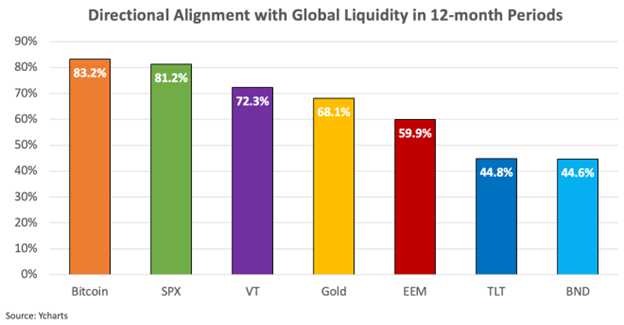The US Federal Reserve is prepared to use its vast arsenal of monetary policy tools to prevent financial and economic conditions from deteriorating rapidly but will do so only if liquidity dries up or markets become disorderly, a top central banker said.
In an interview with the Financial Times, Boston Fed President Susan Collins said the central bank “would absolutely be prepared” to backstop markets if needed.
Source: Walter Bloomberg
While it is generally understood that the Fed is always prepared to act quickly to stave off market chaos, Collins’ remarks come on the heels of asset selloffs across stocks and bonds, which have raised concerns about the health of the US financial system.
Overall, however, the Fed is “not seeing liquidity concerns,” said Collins. If that were to change, policymakers would have “tools to address concerns about markets functioning or liquidity,” she said.

The Fed’s Collins pictured in a December interview with Bloomberg. Source: Bloomberg Television
For investors, Collins’ comments may carry extra weight because she’s a voting member of this year’s Federal Open Market Committee (FOMC) — the 12-person panel responsible for setting interest rates.
While Collins and her fellow FOMC members voted to keep interest rates steady at their March meeting, the biggest takeaway was the central bank’s easing off on quantitative tightening by reducing the redemption cap on Treasurys by 80%.
Related: S&P 500 briefly sees ‘Bitcoin-level’ volatility amid Trump tariff war
The Fed moves markets
Federal Reserve policy exerts a gravitational pull on global markets through US dollar monetary liquidity, or the ease with which dollars can be used for investments and transactions. Liquidity has a major impact on digital asset prices, including Bitcoin (BTC).
This was further corroborated by a 2024 academic paper by Kingston University of London professors Jinsha Zhao and J Miao, which concluded that dollar monetary liquidity “has [a] significant impact on Bitcoin price.”
The relationship strengthened after the COVID-19 pandemic, with liquidity conditions accounting for more than 65% of Bitcoin’s price movements.
“After the pandemic, [monetary liquidity] is the most important determinant of Bitcoin price, outperforming even fundamental measures of Bitcoin network,” the researchers said.
Macro analyst Lyn Alden reached a similar conclusion when she called Bitcoin “a global liquidity barometer” in a September article.
Alden drew attention to the relationship between Bitcoin’s price and global M2, or the broad measure of money supply across major global economies.

Bitcoin trades in the same direction as global liquidity more than 83% of the time. Source: Lyn Alden
As Cryptox reported in early March, an increase in global liquidity and a rebounding business cycle have historically had strong predictive powers for Bitcoin’s price. Liquidity and business cycle trends suggest that BTC’s price could be poised for a recovery in the second quarter.
Magazine: Financial nihilism in crypto is over — It’s time to dream big again




